BIM modeling
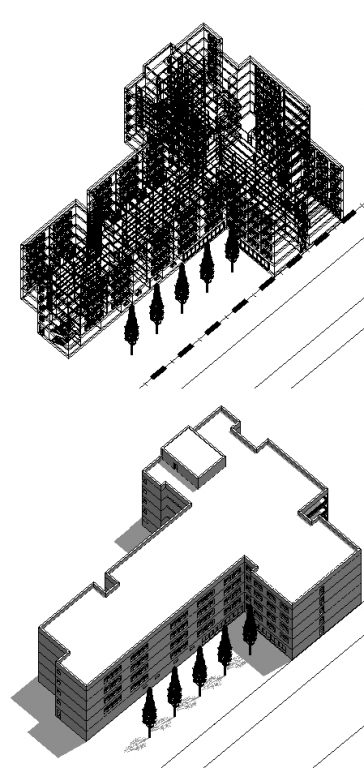
What is BIM modeling?
BIM (Building information Modeling) is the process of generating and managing data of a building. This can include not only the building construction project but also the entire life cycle of the building.
How is it achieved?
With the representation of a building by means of constructive objects that have their data associated. The normal thing is 3D representations of such objects that cease to be lines, planes or volumes to become objects with properties.
Is BIM a computer program?
No. BIM is a work system that BIM programs use but it is not a specific computer program.
What does a BIM model contain?
It contains both the geometry and the properties of the objects
What is the final format for data exchange?
The most popular is the IFC (Industry Foundation Classes). It allows the exchange between the different BIM programs used by the different construction agents (architects, engineers, contractor, owners, etc). There are free programs for viewing these files.
How can we help you with the BIM work methodology?
If you need a BIM model of a building we can take care of this service. Well as BIM modelers or as collaborating or associate architects.
How will we proceed?
We will evaluate the available starting data. These can be 2d plans, physical building or simply nothing, because you still have to project the building.
Specify the degree of participation in modeling (only as modelers or as associated planners or collaborators)
Specify the degree of definition of the model, according to the use that will be given. This is determined by LOD (Level of Development)
| LOD 100 | It is the same as the initial phases, as previous studies or preliminary projects |
| LOD 200 | Modeling in which the basic geometry is defined. You can extract both useful and constructed surfaces. You can also check the urbanistic parameters. In Spain it is the usual level for the basic project. Architectural objects are defined but not their exact dimensions. |
| LOD 300 | In this modeling, the entire architecture of the building is defined. The dimensions of each architectural object are precise and precise measurements can already be extracted |
| LOD 400 | Modeling level with additional information, where other disciplines such as structures, facilities, etc. are already incorporated. The project would be defined to obtain offers from the contractors. In Spain it is the equivalent of the executive project. The object is specified for assembly on site. |
| LOD 500 | Level of development of the BIM model is very detailed and is designed for use in the life cycle of the building. |
Before starting the modeling, we will carry out compatibility tests with the most significant elements to verify that the level of detail, data and the export to IFC are correct.
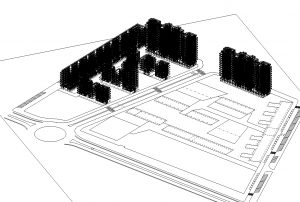
It is possible to make large volume BIM models as whole neighborhoods. Subsequently you can get plants, elevations and views of each building or several. In the image, a BIM model with so much information that in a global view it appears as black spots. If we approached, we could see all the parts of the building well modeled.
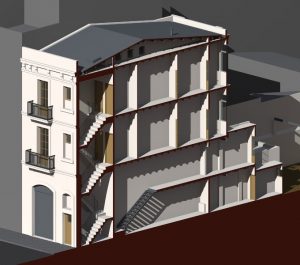
It is also possible to model an existing building to turn it into a BIM model, with information on each element. For example:
- Beams (type of material, resistance, characteristics, etc.)
- Windows (type of window, type of glasses, manufacturer, types of fittings, etc)
- Spaces (dimensions, maximum occupancy, volume, etc.)
- Walls (resistance, characteristics, etc.)
You can save data of any element and then use it in building reports.
DO YOU NEED THIS SERVICE OR MORE INFORMATION?
Drawing of building plans
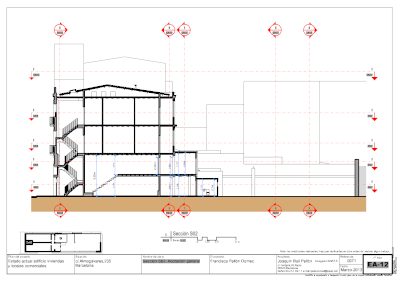
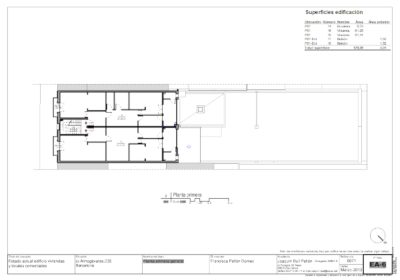
The drawing of plans of buildings, premises or houses consists of the representation of plans of floors, elevations and / or sections that represent the constructed reality.
To proceed with its execution, we must specify the scope of these works to evaluate the necessary documents for their correct representation. In these cases they can be plants and / or elevations and / or sections.
We must also specify the level of detail that we must represent and what elements we will represent according to the purpose of these documents. If we need these documents only to know the surface and distribution of a house for example, it will not be necessary to indicate the passage of drainage channels. However, if we need these plans for further reform, it will be necessary to include this information as well as others.
The detail of the information represented will depend on the final use of the aforementioned documents.
The result can be delivered in paper, PDF or computer file in two dimensions (2D) with DWG, DXF format, etc. (other formats consult)
DO YOU NEED THIS SERVICE OR MORE INFORMATION?
3d modeling

It consists in the creation of a 3d model using modeling software.
For our discipline the object to be modeled is usually a building, although it can also be other types of objects (furniture, stairs, etc.)
With this modeling you get a virtual model from where you can obtain plants, elevations, sections or views of the building or 3d object.
From this part of the process it is possible to obtain renderings, by means of a software of renderings and later to obtain improved images by means of another image processing software.
It is also possible to not render and obtain the image directly from the image processing software.
DO YOU NEED THIS SERVICE OR MORE INFORMATION?
Measurement and budget of projects
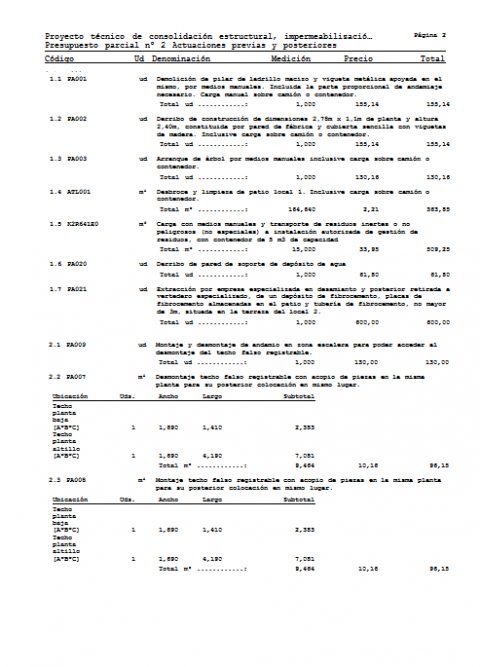
What does this service comprise?
The measurements and budget are documents that belong to the building or rehabilitation project.
It is also possible to write these documents for other purposes, such as the valuation of some work carried out in a construction, to budget a work by a construction company, etc.
The measurements reflect the work items with the measurement of these and without prices.
The budget reflects the work items with a valuation, based on the measurement and unit price of each batch of work.
Subsequently, with the sum of all the work items, plus the additional costs, we will know the value of the construction.
DO YOU NEED THIS SERVICE OR MORE INFORMATION?
Work direction
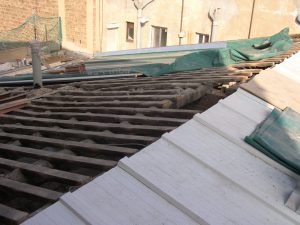
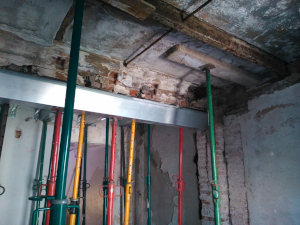
What does the construction management include?
In accordance with the provisions of article 12 of the Law 38/1999 on the Regulation of Building, the construction manager is the agent who, as part of the facultative direction, directs the development of the work in the technical, aesthetic, urbanistic aspects and environmental, in accordance with the project that defines it, the building license and other mandatory authorizations and the conditions of the contract, to ensure its adequacy to the proposed purpose. The construction management can cover both the new work and the rehabilitation of buildings or parts of them.
Who should perform the direction of the work?
The construction management is convenient to be carried out by the architect who drafted the executive project, however if there is an impediment on the part of the aforementioned architect or you just do not want to commission this phase of the project, it is possible that another architect carries out the works management.
Other considerations
Logically to perform this service, there must be a basic and executive project drafted.
DO YOU NEED THIS SERVICE OR MORE INFORMATION?
Housing reforms
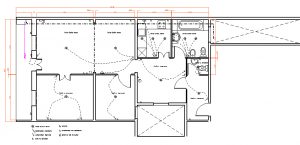
The process of intervention in the reform of a house will depend on the scope and scope of it.
The wording of the project will depend on the type of intervention to be carried out. Depending on whether the intervention includes affectation to the partition, for a new distribution or if the intervention includes a repair, consolidation or structural reinforcement or instead it is a union between two dwellings or the segregation between two or more dwellings, the project to be carried out It will be different.
In these cases, it is necessary to study in each case and each municipality how to proceed.
How shall we proceed?
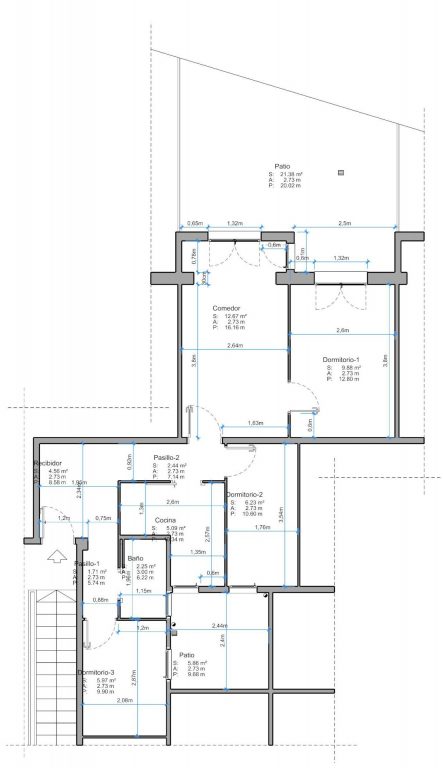
We will proceed to evaluate the state of the home and if any structural intervention is necessary or is affected by any pathology that we should repair to include it in the project.
We will make a plan of the current state and of the detected pathologies (if they exist).
We will analyze the possible improvements both acoustically and thermally.
We will analyze your needs and propose an improvement of the spaces both functionally and in relation to the building and the exterior space.
We will analyze the materials most suited to your needs.
With all the analyzes carried out, we will propose a proposal where you can see how your future home will look.
When you are convinced of the proposal, we will start the drafting of the project to obtain the works license. This project will include, among other documents, a state of measurements and a budget separated by work items to have knowledge of the cost of the work. With the state of measurements contractors can present their best offer on the reform of your home always on the same state of measurements, so you can compare between them on the same state of measurements.
If you wish, in the reform you can include the furniture of the whole house so that you only have to take care of going to live.
Although the project is small, it has a complexity not only of constructive and normative construction techniques, but also in the processing of all documentation. When the project is completed you must process the documentation to obtain the municipal license of works, if you wish we can take care of everything. When the work is finished, you may need other services such as a certificate of occupancy, energy certificate, etc. If you wish, we can also take care of these documents and their processing. We will always be at your side to advise you professionally and independently of the other intervening parties, something that does not happen when the reform is entrusted to a company that deals with all design, construction and processing of files.
The architect of the property is a figure that has always existed. He is an independent professional, hired by the client and independent of the rest of the people involved in the work and who will always be on his side.
DO YOU NEED THIS SERVICE OR MORE INFORMATION?
Extension of buildings
The extension of buildings in general follows the same phases as a new building.
Previous study
It constitutes the preliminary phase in which the ideas that develop the assignment are expressed in an elementary and schematic way, by means of sketches or drawings, at scale or without it. It includes the collection and systematization of the precise information, the approach of the technical program of needs, and an indicative estimate of the economic cost (estimation based on modules) that allow the client to adopt an initial decision.
The previous study differs from the preliminary project, in that its contents are elementary and appreciative, developing the needs program and analyzing the previous information, which, like the program, must be facilitated by the promoter.
The cost estimate can be global, based on experiences of similar jobs.
Draft project
It is the phase of the work in which the fundamental aspects of the general characteristics of the work are exposed: functional, formal, constructive and economic, in order to provide a first global image. It must be understood that this concept is different, and much less detailed than that which corresponds to a Basic Project and is limited to establishing a budget advance with an estimate based on modules, by application of global surfaces. It differs from the previous phase in the availability of surfaces closer to reality, although still imprecise, by having a measurement based on a graphic documentation at scale, but without delimiting.
Basic project
It is the phase of work in which the general characteristics of the work are defined precisely by adopting and justifying concrete solutions. Its content is sufficient to request the municipal license or other administrative authorizations, but insufficient to carry out the construction.
Execution project
It is the phase of the work that develops the basic project, with the complete determination of details and specifications of all the materials, elements, constructive systems and equipment, and can be carried out in its entirety, before the beginning of the work, or partially, before and during the execution of it. Its regulatory content is sufficient to obtain the necessary collegiate visa to start the works.
It does not include other partial or complementary projects that may be required, but not of the competence of the architect, such as Telecommunications projects, and Elevators, or other works, which, although they are the responsibility of the architect, are not part of the projects. building projects, such as safety and health studies or basic studies of safety and health, decoration, design or choice of furniture, gardening, and in general any work that has the status of complementary and independent of the project of the building.
The execution project can be made up of partial projects carried out by other professionals and coordinated by the architect, according to point 2 of the Statement of Motives, article 4.2 and article 10.1 of the LOE.
Construction management
In accordance with the provisions of article 12 of the Law 38/1999 on the Regulation of Building, the construction manager is the agent who, as part of the facultative direction, directs the development of the work in the technical, aesthetic, urbanistic aspects and environmental, in accordance with the project that defines it, the building license and other mandatory authorizations and / or the conditions of the contract, to ensure its adequacy to the proposed purpose.
Other technicians, legally competent, may direct the works of the partial projects, under the coordination of the architect director of the work, in accordance with article 17.7 of the LOE.
Settlement of the work
In this phase the determination of the final economic state of the work is carried out by applying the prices that govern it according to the real state of measurements of the items that comprise it, provided by the director of the execution of the work.
The Director of the work is responsible for the partial certifications and final liquidation of the work units executed with the required visas.
Other considerations
Depending on the type of work the basic project and the executive project are merged into one, writing a single document called basic and executive project.
In the work phase, the intervention of the director of the execution of the work will also be necessary, the exclusive competence of a rigger, technical architect or construction engineer, according to the LOE.
In addition, other documents, such as the basic safety study or safety study and the intervention of a safety and health coordinator, will be necessary. Depending on the type of work, other technicians may be required.
How shall we proceed?
In this case we will study the relationship of the extension, with the existing building and the surroundings, to achieve an aesthetic and functional harmony between both parties.
We will study the best functional, aesthetic, acoustic comfort and thermal comfort solutions.
We will improve the existing building, if it is also intervened on this.
When we have a proposal we will present it and after its approval we will begin the process of drafting the project.
DO YOU NEED THIS SERVICE OR MORE INFORMATION?
Rehabilitation projects
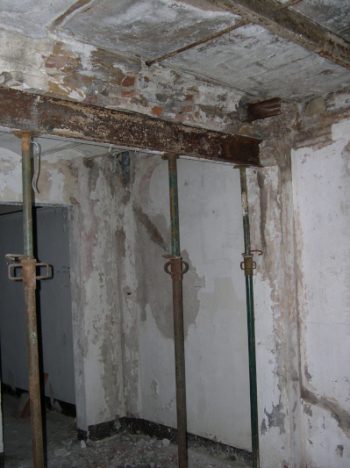
The process to be carried out in a rehabilitation project will depend on its scope.
If it is a specific intervention, you will need a different procedure than a comprehensive rehabilitation project for the entire building.
Depending on the project, only a technical project may be necessary.
We must also know if the intervention is a restoration, repair, rehabilitation, consolidation or reinforcement according to the results of the previous study.
During the visit we will inform you if it is necessary to implement precautionary measures such as shoring, placement of networks, installation of protections, etc.
We will also inform you of the procedure to be followed during the entire rehabilitation process since it may vary according to each case.
How shall we proceed?
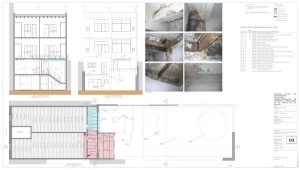
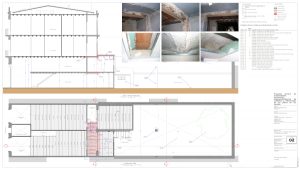
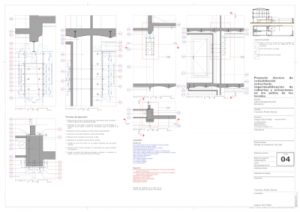
Depending on each case, we will proceed in one way or another, but in general, we must first identify whether the intervention is punctual or integral throughout the building.
With all this we will initiate the following phases of our protocol, which among others comprises:
- Initial phase of data collection
- Historical knowledge of the building and the different interventions practiced over the years
- Obtaining the general geometry of the building
- Obtaining the specific geometry of the structural elements
- Quantification of existing deformations
- Knowledge of the actual state of conservation of the different elements
- Detection of possible pathologies in materials
- Estimation of the real resistance of different materials
- Analysis of the status of nearby buildings
- Prepare a tasting plan
- Results of the process to assess the type of intervention. Evaluation of the type of intervention restoration, repair, rehabilitation, consolidation or reinforcement
- Preparation of the intervention project according to the case
- Construction management according to the type of intervention
DO YOU NEED THIS SERVICE OR MORE INFORMATION?
Building projects
The new construction projects have similar drafting phases in any of the building’s uses.
They are usually the following:
Previous study
It constitutes the preliminary phase in which the ideas that develop the assignment are expressed in an elementary and schematic way, by means of sketches or drawings, at scale or without it. It includes the collection and systematization of the precise information, the approach of the technical program of needs, and an indicative estimate of the economic cost (estimation based on modules) that allow the client to adopt an initial decision.
The previous study differs from the preliminary project, in that its contents are elementary and appreciative, developing the needs program and analyzing the previous information, which, like the program, must be facilitated by the promoter.
The cost estimate can be global, based on experiences of similar jobs.
Draft project
It is the phase of the work in which the fundamental aspects of the general characteristics of the work are exposed: functional, formal, constructive and economic, in order to provide a first global image. It must be understood that this concept is different, and much less detailed than that which corresponds to a Basic Project and is limited to establishing a budget advance with an estimate based on modules, by application of global surfaces. It differs from the previous phase in the availability of surfaces closer to reality, although still imprecise, by having a measurement based on a graphic documentation at scale, but without delimiting.
Basic project
It is the phase of work in which the general characteristics of the work are defined precisely by adopting and justifying concrete solutions. Its content is sufficient to request the municipal license or other administrative authorizations, but insufficient to carry out the construction.
Execution project
It is the phase of the work that develops the basic project, with the complete determination of details and specifications of all the materials, elements, constructive systems and equipment, and can be carried out in its entirety, before the beginning of the work, or partially, before and during the execution of it. Its regulatory content is sufficient to obtain the necessary collegiate visa to start the works.
It does not include other partial or complementary projects that may be required, but not of the competence of the architect, such as Telecommunications Projects, and Elevators, or other works, which, although they are the responsibility of the architect, are not part of the projects. building projects, such as safety and health studies or basic studies of safety and health, decoration, design or choice of furniture, gardening, and in general any work that has the status of complementary and independent of the project of the building.
The execution project can be made up of partial projects carried out by other professionals and coordinated by the architect, according to point 2 of the Statement of Motives, article 4.2 and article 10.1 of the LOE.
Construction management
In accordance with the provisions of article 12 of the Law 38/1999 on the Regulation of Building, the construction manager is the agent who, as part of the facultative direction, directs the development of the work in the technical, aesthetic, urbanistic aspects and environmental, in accordance with the project that defines it, the building license and other mandatory authorizations and / or the conditions of the contract, to ensure its adequacy to the proposed purpose.
Other technicians, legally competent, may direct the works of the partial projects, under the coordination of the architect director of the work, in accordance with article 17.7 of the LOE.
Settlement of the work
In this phase the determination of the final economic state of the work is carried out by applying the prices that govern it according to the real state of measurements of the items that comprise it, provided by the director of the execution of the work.
The Director of the work is responsible for the partial certifications and final liquidation of the work units executed with the required visas.
Other considerations
Depending on the type of work the basic project and the executive project are merged into one, writing a single document called basic and executive project.
In the work phase, the intervention of the director of the execution of the work will also be necessary, the exclusive competence of a rigger, technical architect or construction engineer, according to the LOE.
In addition, other documents, such as the basic safety study or safety study and the intervention of a safety and health coordinator, will be necessary. Depending on the type of work, other technicians may be required.
How shall we proceed?
After contacting us we will take note of the necessary data for the first steps. We must know the use of the building, the program of needs and where the plot is located.
When we have it evaluated we will indicate the viability of your idea and we will proceed to give you some guidelines for the following phases. We will also provide you with a fee proposal so that you know the cost of our services divided by the phases of the project.
If the order goes ahead, we will start the whole process, starting by gathering the rest of the information we need to prepare the project. Keep in mind that we will need other documents that other technicians carry out, such as a geotechnical study of the site. We will collect the necessary information from the corresponding municipality. Once we have all the information, we will carry out preliminary studies or, directly, a preliminary project, so that we can assess the adequacy of the project to your needs.
When everything is correct on your part, we will move on to the next phase, which consists in carrying out the basic project to specify all the issues addressed in the preliminary draft. With the basic project we could initiate the procedures to request the municipal license. However, we can also wait to carry out the necessary executive project to start the works since, even if we have the works license, we can not start the works without having it drafted.
Having already all the necessary documentation we could start the work. The next phase would be the construction management.
DO YOU NEED THIS SERVICE OR MORE INFORMATION?
Los proyectos de edificación de obra nueva tienen unas fases de redactado similares en cualquiera de los usos del edificio.
Por lo general son las siguientes:
Estudio previo
Constituye la fase preliminar en la que se expresan las ideas que desarrollan el encargo de manera elemental y esquemática, mediante croquis o dibujos, a escala o sin ella. Incluye la recogida y sistematización de la información precisa, el planteamiento del programa técnico de necesidades, y una estimación orientativa del coste económico (estimación basada en módulos) que permitan al cliente adoptar una decisión inicial.
El estudio previo se diferencia del anteproyecto, en que sus contenidos son elementales y apreciativos, desarrollando el programa de necesidades y analizando la información previa, que al igual que el programa, debe ser facilitada por el promotor.
La estimación de coste puede ser global, basándose en experiencias de trabajos similares.
Anteproyecto
Es la fase del trabajo en la que se exponen los aspectos fundamentales de las características generales de la obra: funcionales, formales, constructivas y económicas, con el fin de proporcionar una primera imagen global. Hay que entender que este concepto es diferente, y mucho menos detallado que el que corresponde a un Proyecto Básico y se limita a establecer un avance de presupuesto con una estimación basada en módulos, por aplicación de superficies globales. Se diferencia de la fase anterior en la disponibilidad de unas superficies más aproximadas a la realidad, aunque todavía imprecisas, al disponerse de una medición basada en una documentación gráfica a escala, pero sin delimitar.
Proyecto básico
Es la fase del trabajo en la que se definen de forma precisa las características generales de la obra mediante la adopción y justificación de soluciones concretas. Su contenido es suficiente para solicitar la licencia municipal u otras autorizaciones administrativas, pero insuficiente para llevar a cabo la construcción.
Proyecto de ejecución
Es la fase del trabajo que desarrolla el proyecto básico, con la determinación completa de detalles y especificaciones de todos los materiales, elementos, sistemas constructivos y equipos, y puede llevarse a cabo en su totalidad, antes del comienzo de la obra, o parcialmente, antes y durante la ejecución de la misma. Su contenido reglamentario es suficiente para obtener el visado colegial necesario para iniciar las obras.
No incluye otros proyectos parciales o complementarios que puedan ser exigibles, pero que no sean de la competencia del arquitecto, como por ejemplo los proyectos de Telecomunicaciones, y Ascensores, ni otros trabajos, que aun siendo competencia de el arquitecto, no forman parte de los proyectos de edificación, como por ejemplo, los estudios de seguridad y salud o estudios básicos de seguridad y salud, decoración, diseño o elección de mobiliario, trabajos de jardinería, y en general cualquier trabajo que tenga la condición de complementario e independiente del proyecto del edificio.
El proyecto de ejecución puede componerse de proyectos parciales realizados por otros profesionales y coordinados por el arquitecto, conforme el punto 2 de la Exposición de Motivos, el artículo 4.2 y el artículo 10.1 de la LOE.
Dirección de obra
Conforme a lo dispuesto en el artículo 12 de la Ley 38/1999 de Ordenación de la Edificación, el director de obra es el agente que, formando parte de la dirección facultativa, dirige el desarrollo de la obra en los aspectos técnicos, estéticos, urbanísticos y medioambientales, de acuerdo con el proyecto que la define, la licencia de edificación y otras autorizaciones preceptivas y/o las condiciones del contrato, para asegurar su adecuación al fin propuesto.
Otros técnicos, legalmente competentes, podrán dirigir las obras de los proyectos parciales, bajo la coordinación del arquitecto director de la obra, conforme al artículo 17.7 de la LOE.
Liquidación de la obra
En esta fase se efectúa la determinación del estado económico final de la obra mediante la aplicación de los precios que rijan en ella según el estado real de mediciones de las partidas que la componen, facilitadas por el director de ejecución de la obra.
Corresponde al Director de la obra conformar las certificaciones parciales y la liquidación final de las unidades de obra ejecutadas con los visados que en su caso fueran preceptivos.
Otras consideraciones
Dependiendo del tipo de obra el proyecto básico y el proyecto ejecutivo se funden en uno solo, redactando un único documento llamado proyecto básico y ejecutivo.
En la fase de obra también será necesaria la intervención del director de ejecución de la obra, competencia exclusiva de un aparejador, arquitecto técnico o ingeniero de la construcción, según dispone la LOE.
Además serán necesarios otros documentos como el estudio básico de seguridad o estudio de seguridad y la intervención de un coordinador de seguridad y salud. Según el tipo de obra pueden ser requeridos otros técnicos.
